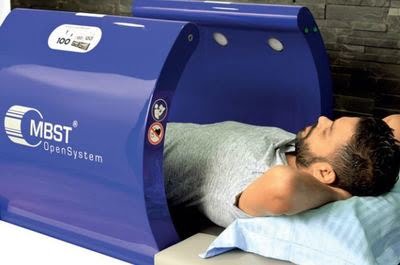
 A young patient undergoes magnetic resonance for arthritis at a Bengaluru hospital.
A young patient undergoes magnetic resonance for arthritis at a Bengaluru hospital.Kaveri (name changed) was only 18 when she suffered acute pain in the joints, knee, ankle and foot. She was forced to take to a wheelchair after being diagnosed with rheumatoid arthritis. Shubho, a cricketer from Bengal, was 23 when he was diagnosed with ankylosing spondylitis, where arthritis affected his spine. Such was his condition that doing even the simplest of tasks became difficult.
Arthritis is no longer just a senior citizens’ ailment. Several youngsters in their mid-20s to late 30s are getting affected by it, said city doctors on World Arthritis Day on Thursday . “An increasing number of youngsters are getting diagnosed with rheumatoid arthritis, an autoimmune condition where the body’s immune system mistakenly attacks the joints, creating inflammation which causes the inner joint tissues to thicken, resulting in swelling and pain in and around the joint,” said Dr Yogesh Singh, HOD and consultant rheumatologist at Manipal Hospitals.
“Early diagnosis with aggressive treatment targeting remission, reducing inflammation and preventing joint damage are essential to control rheumatoid arthritis. Left unchecked, the inflammation can damage the cartilage, the tissues that cover the end of the bone in a joint, leading to decreased joint spacing. It can also cause permanent and irreversible damage to the joints,” he added.
Lack of exercise, deficiency of vitamin D, smoking and consumption of junk and processed food are some of the causes of rheumatoid arthritis, say orthopaedics. While people with a family history of ar thritis are more prone to the ailment, it also affects those with no known genetic history .
“Compared to women in the West, arthritis is more common among younger Indian women. This is because they have bowlegs which are slightly curved thereby making them more vulnerable. Also, higher incidence of obesity and knee injuries contribute to more youngsters suffering from arthritis,” said Dr Thomas Chandy , director and chief of orthopaedics and joint replacements at Hosmat Hospital.
Doctors are seeing more youngsters opting for non-invasive magnetic resonance therapy to cure arthritis. Said Dr Gautam Kodikal, consultant orthopedic at iRevive IEM: “Magnetic resonance is the only technology that can regenerate cartilage, bone cells, ligaments, tendons and muscle cells. The technology works at the cellular level, transferring energy directly to the cells of the tissue being treated to stimulate regenerative processes.”
Magnetic resonance is a non-invasive, non-surgical regenerative therapy, requiring no medication and with no known side effects.”Knee replacement should be reserved for end-stage arthritis. It is prudent to utilize a regenerative procedure in a young patient. This, if successful, will allow a more natural knee function while still reserving the option of knee replacement if the arthritis worsens,” explained Dr G Thiruvengita Prasad, consultant at trauma and orthopedics at Apollo Spectra Hospitals.
FREE CAMP
The Times Foundation, in association with Aster CMI Hospital, will hold a free arthritis camp on Friday and Saturday between 10am and 5pm.
Those suffering from knee painswelling, joint painswelling, earlymorning stiffness, muscle weakness, painful joints, and those with arthritis can attend the camp.
It will be held at Aster CMI Hospital, #432, New Airport Road, NH-7, Sahakarnagar, Hebbal. For details contact 7625039895.
TIMES VIEW
Not too long ago, arthritis would be typically associated with senior citizens. But that’s no longer the case. More youngsters are suffering from the condition, and this trend is worrisome. A sedentary lifestyle is at the root of the ailment attacking the younger crowd. This lifestyle brings along health hazards that are often ignored but, eventually, one pays a steep price for it. As it is, today’s working professionals often find themselves bearing the burden of round-the-clock projects and deadlines. The need to make a conscious effort to stay fit cannot be over-emphasized.
Price cap on knee implants may affect quality: Docs
Doctors also fear that multinational companies may show reluctance in introducing newer implants with better design features and biomaterial in the Indian market as the price cap may make them unviable.




